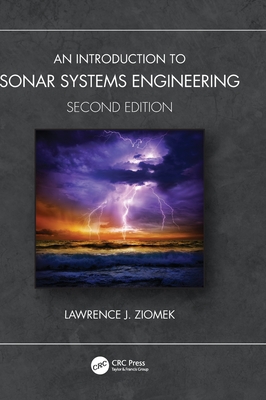相關主題
商品描述
Description:
A cohesive view of the expanding field of optical scanning, in a single compact volume
Optical scanning is a systematic sampling of spatial information, transforming images or data to or from a temporal signal for electronic processing. The field of optical information handling has been developing rapidly, with many of its classical forms being transformed in new and fascinating ways. For instance, the once-discrete fields of serial and parallel optical information transfer are evolving into new hybrid systems as researchers add the flexibility of optical scanning for greater operational advantage in data manipulation and transfer. Insight for such creative advancement is fostered with the unification of unapparent or secluded concepts.
Written by an award-winning leader in the field, this is a thoroughly integrated overview of the many facets and disciplines of optical scanning. It brings together scanning theory, scanned resolution, deflection and modulation devices, optical transfer techniques, positional error analysis and control, system architecture, new research, and the unification of complementary or analogous processes, such as active and passive scanning systems.
Of particular utility to both practitioner and student are such features as:
- An overview of the technology and unifying principles, including active and passive scanning, optical transfer, and system architecture
- In-depth chapters on scanning theory and processes, scanned resolution, scanner devices and techniques, and the control of scanner beam misplacement
- A comprehensive review of the government-sponsored research of agile beam steering, now primed for commercial adaptation
- A unique focus on the Lagrange invariant and its revealing resolution invariant
Table of Contents:
Preface.
Chapter 1. Introduction—Technology Overview and Unifying Principles.
1.1 Optical Scanning Characteristics and Disciplines.
1.2 Active and Passive Scanning.
1.3 Input, Output, and Remote Sensing Systems.
1.4 Optical and Resolution Invariants; Optical Transfer.
1.5 System Architecture.
Chapter 2. Scanning Theory and Processes.
2.1 The Point Spread Function and Its Convolution.
2.2 Quantized or Digitized Scan.
2.3 Gaussian Beam Propagation.
2.4 Scanned Quality and Modulation Transfer Function.
Chapter 3. Scanned Resolution.
3.1 Influence and Significance of Scanned Resolution.
3.2 Aperture Shape Factor.
3.3 The Resolution Equation, the Resolution Invariant, and Beam Propagation.
3.4 Augmented Resolution.
3.5 Resolution in Passive and Remote Sensing Systems.
Chapter 4. Scanner Devices and Techniques.
4.1 Scanner Technology Organization.
4.2 High-Inertia Scanning.
4.3 Rotating Polygons.
4.4 Holographic Scanners.
4.5 Oscillatory (Vibrational) Scanners.
4.6 Scanner-Lens Relationships.
4.7 Low-Inertia Scanning.
4.8 Acoustooptic Scanners .
4.9 Electrooptic (Gradient) Scanners.
4.10 Agile Beam Steering.
Chapter 5. Control of Scanner Beam Misplacement.
5.1 Cross-Scan Error and Its Correction.
5.2 The Ghost Image and Its Elimination.
Chapter 6. Summary—Major Scanner Characteristics.
6.1 Comparison of Major Scanner Types.
References.
Index.
商品描述(中文翻譯)
**描述:**
一個關於光學掃描擴展領域的整體觀點,匯集於一本緊湊的書籍中。
光學掃描是一種系統性地取樣空間資訊,將影像或數據轉換為或從時間信號進行電子處理。光學資訊處理的領域正在迅速發展,許多傳統形式以新穎而迷人的方式轉變。例如,曾經獨立的串行和並行光學資訊傳輸領域,隨著研究人員將光學掃描的靈活性加入,正在演變為新的混合系統,以便在數據操作和傳輸中獲得更大的操作優勢。這種創造性進步的洞察力是通過統一不明顯或隱蔽的概念來促進的。
本書由該領域的獲獎領導者撰寫,全面整合了光學掃描的多個面向和學科。它匯集了掃描理論、掃描解析度、偏轉和調變裝置、光學傳輸技術、位置誤差分析與控制、系統架構、新研究,以及互補或類似過程的統一,例如主動和被動掃描系統。
對於實務工作者和學生而言,特別有用的特點包括:
- 技術和統一原則的概述,包括主動和被動掃描、光學傳輸和系統架構
- 關於掃描理論和過程、掃描解析度、掃描器裝置和技術,以及掃描器光束錯位控制的深入章節
- 對政府贊助的敏捷光束引導研究的全面回顧,現在已準備好商業應用
- 獨特聚焦於拉格朗日不變量及其揭示的解析度不變量
**目錄:**
前言。
第一章。介紹—技術概述和統一原則。
1.1 光學掃描特性和學科。
1.2 主動和被動掃描。
1.3 輸入、輸出和遠端感測系統。
1.4 光學和解析度不變量;光學傳輸。
1.5 系統架構。
第二章。掃描理論和過程。
2.1 點擴散函數及其卷積。
2.2 量化或數位掃描。
2.3 高斯光束傳播。
2.4 掃描品質和調變傳輸函數。
第三章。掃描解析度。
3.1 掃描解析度的影響和重要性。
3.2 光圈形狀因子。
3.3 解析度方程、解析度不變量和光束傳播。
3.4 增強解析度。
3.5 被動和遠端感測系統中的解析度。
第四章。掃描器裝置和技術。
4.1 掃描器技術組織。
4.2 高慣性掃描。
4.3 旋轉多邊形。
4.4 全息掃描器。
4.5 振動掃描器。
4.6 掃描器與鏡頭的關係。
4.7 低慣性掃描。
4.8 聲光掃描器。
4.9 電光(梯度)掃描器。
4.10 敏捷光束引導。
第五章。掃描器光束錯位的控制。
5.1 橫掃誤差及其修正。
5.2 幽靈影像及其消除。
第六章。總結—主要掃描器特性。
6.1 主要掃描器類型的比較。
參考文獻。
索引。












